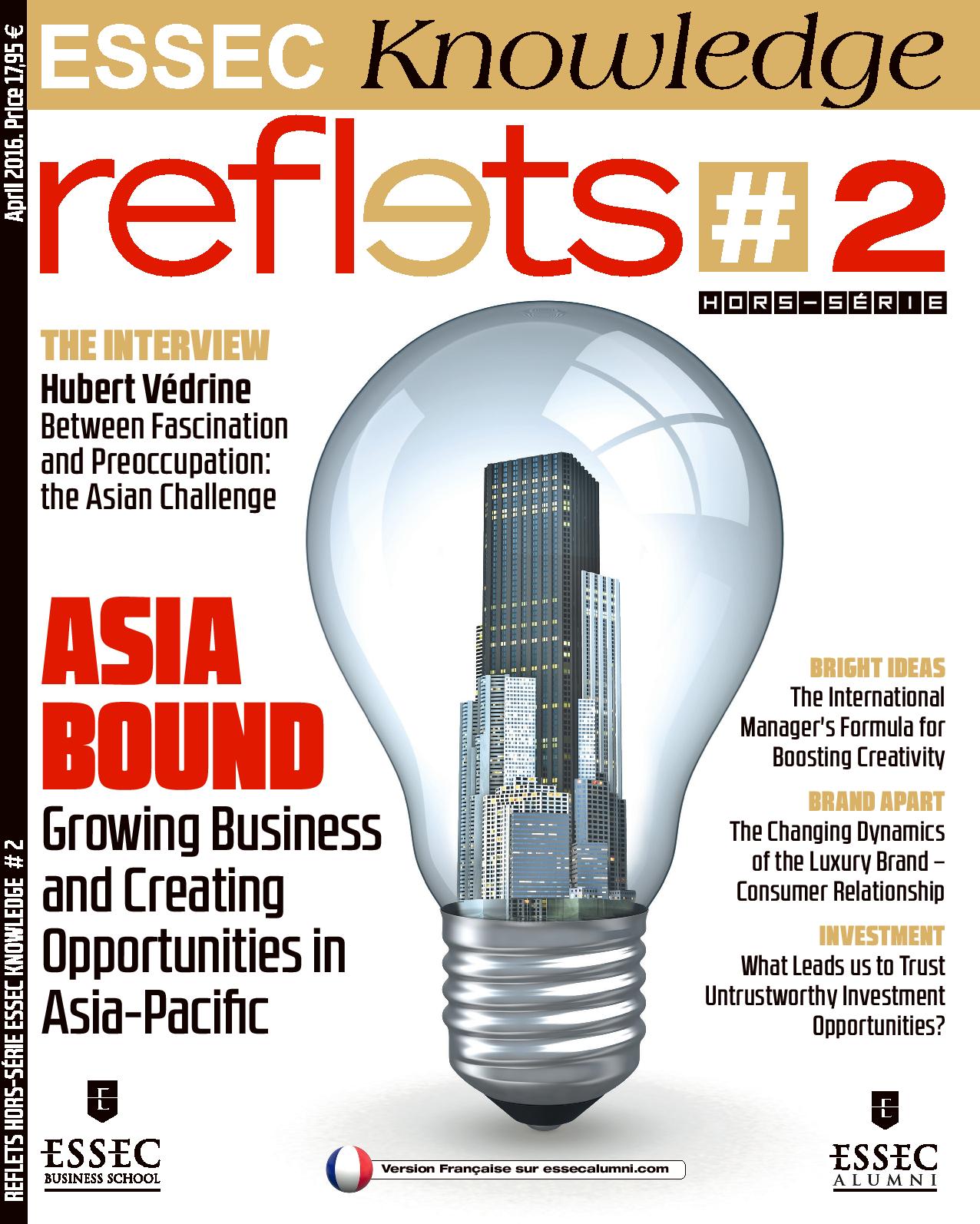Culture shapes how people view themselves, how they experience relationships with those around them, and how they perceive the outside world. But does it also impact their ability to be creative and devise new and valuable objects, ideas and solutions?
Many have argued that some cultures are naturally more conducive to creativity. Findings have suggested, for example, that Anglo-Saxon cultures, with their emphasis on uniqueness and independence, promote the highest levels of creativity; while on the opposite end of the spectrum, Far Eastern and Confucian Asian cultures, with their emphasis on conformity and interdependence, have been shown to inhibit creativity.
This perspective, however, fails to explain how countries with cultures that would theoretically inhibit creativity, have built some of the world’s most innovative businesses: The Forbes list of “The 100 Most Innovative Companies” features firms from 20 different countries, including Indonesia (Unilever Indonesia - #6), China (Baidu - #11), Thailand (CP ALL - #17), and Japan (Rakuten - #19).
Therefore, Michael Morris and Kwok Leung offer the alternative explanation - and one that my research supports - that different social normative expectations of valued work outcomes account for why there are perceived differences in creativity across cultures. In other words, it’s not that cultures are more or less creative, but rather that each culture values certain aspects of creativity over the others and therefore achieves creativity in different ways and for different reasons.
Since creativity is a source of competitive advantage for organizations across a wide variety of countries, and for a growing number of multinational corporations, it’s critical that these organizations be able to foster creativity in a variety of cultural contexts. To help international managers respond to this challenge, the social normative perspective offers a simple formula. Dean Keith Simonton and Shing-Shiang Ting proposed the following formula: creativity = novelty x usefulness.
Creative differences: novelty or usefulness
The social norms perspective on culture and creativity proposes that each culture places a different emphasis on novelty relative to usefulness. Accordingly, creativity in organizations is a social construct comprising sensemaking processes and outcomes in accordance with what is normatively valued by the culture within which an organization is situated. Thus, cultural differences in creativity can be explained in terms of social normative expectations of either novelty-seeking activities or usefulness-seeking activities. In other words, it is not that some cultures are inherently less creative but that there are social normative expectations to engage in usefulness-seeking activities that results in lower creative performance.
Anglo Saxon cultures tend to place a great deal of importance on novelty, or the extent to which an idea is new or different when compared to existing ideas. Their creativity icons are Steve Jobs, Richard Branson, or Elon Musk - individuals who paved their own way to success by creating businesses that changed existing paradigms.
Their stories reflect the social norms of Anglo Saxon cultures: they tend to be highly individualistic, relish uncertainty, low in power distance, masculine and culturally loose, traits that tend to imprint a cognitive style emphasizing divergent and flexible thinking and a discovery approach to problem-solving. Thus, these norms favor the generation of a variety of alternative solutions, facilitating novelty.
East Asian cultures, on the other hand, tend to place greater importance on usefulness, or the extent to which an idea is an appropriate response to a problem. Their creativity icons include Sim Wong Hoo, Robin Li and Jack Ma.
Social norms in East Asian cultures - collectivistic, uncertainty avoidance, power distance, feminine and culturally tight - imprint a cognitive style that emphasizes convergent thinking and closure, facilitating idea selection and structure. Thus, these norms favor usefulness.
|
Social Normative Perspective |
|
|
norms which favor |
Norms which favor |
|
Individualism, where value is placed on uniqueness and distinguishing oneself from others |
Collectivism, where value is placed on cohesion and being in harmony with others |
|
Low uncertainty avoidance, preference for ill-defined problem structures and procedures that encourage risk-taking |
High uncertainty avoidance, where value is placed on structured and predictable situations |
|
Low power-distance, value limited dependence on authority and consultative decision-making |
High power-distance, value dependence on a centralized authority and autocratic decision-making |
|
Masculinity, value achievements through competition and performance |
Femininity, value equality and achievement through cooperation and learning |
|
Culturally loose, high tolerance for deviance from appropriate behavior |
Culturally tight, low tolerance for deviance from appropriate behavior |
However, a creative solution should be both novel and useful. By analyzing these ‘creative differences’ between cultures, my research collaborators and I are currently developing a theory on how managers might effectively enhance creativity across different cultures.
We draw on Teresa Amabile’s componential theory of creativity that identifies four theoretical drivers of creativity, each of which must be present for creativity to be achieved. Our research suggests that these components are the key to facilitating or fostering creativity across cultures. The key is to identify the creativity component that complements the social normative expectations of a given culture.
|
Creativity Components |
|
|
task motivation or the internal drive to problem solve or undertake a task because the work is interesting, challenging, or satisfying as an end itself; |
domain relevant skills, the knowledge, expertise, techniques, and rules associated with a particular domain where the problem solver is working; |
|
creativity-relevant skills, the cognitive style and problem-solving approaches that foster independent thinking; |
work environment, organizational factors that support creativity like tolerance for failure where employees feel comfortable voicing their ideas. |
Enhancing creativity across the board: novelty and usefulness
Managers can’t change the social normative expectations imposed by their country's culture. They can, however, develop or trigger the creativity component that complements their culture. In other words, since each culture may place importance on one part of the equation by default, creativity can be achieved in any culture by triggering the component that relates to the other part of the equation:
Creativity = novelty x usefulness
We argue that different cultures will emphasize each component of creativity to a greater or lesser extent depending on social normative expectations. For instance, according to the social normative perspective, cultures that are individualistic, low in uncertainty avoidance, low in power distance, masculine, and culturally loose will pay by default a greater emphasis on the novelty part of the equation. Conversely, cultures that are collectivistic, uncertainty avoidant, power distant, feminine, and culturally tight will by default pay a greater emphasis on the usefulness part of the equation. Each component’s effect on creativity will be maximized when they complement the social normative emphasis on either novelty or usefulness imposed by the country’s culture. For instance, the research to date seems to suggest that task motivation, creativity-relevant skills, and the work environment is relatively more likely to affect novelty whereas domain-relevant skills is relatively more likely to affect usefulness. Hence, our idea – in equation terms – is as follows:
Creativity = (task motivation x creativity relevant skills x work environment) x (collectivistic, uncertainty avoidant, power distant, feminine, and culturally tight)
And
Creativity = (individualistic, low uncertainty avoidant, low power distant, masculine, and culturally loose) x (domain relevant skills)
Limitations notwithstanding, our idea presents several useful insights for practice. Managers tasked with enhancing creativity in their organization should be cognizant of the creative strengths and weakness of their organization's cultural setting. However, instead of the conventional wisdom of reducing or eradicating cultural biases that inhibit creativity, we recommend that managers will do better by working towards improving the dimension of creativity that is not emphasized by the culture of the country they are working in. For instance, managers in individualistic cultural settings like the US and Israel should focus their efforts on improving the domain-relevant skills of their employees with training and development. In contrast, managers in collectivistic cultural setting like China and Japan should focus their efforts on fostering task motivations amongst their employees with appropriate incentive systems and supportive work environments.
The role of culture has been – and continues to be – one of the most interesting factors in the study of creativity in organizations. Even so, empirical studies have been designed primarily to test the hypothesis that some cultures are inherently more conducive to creativity than other cultures. In contrast, we provide insight into how organizations can attain superior levels of creative performance in any country.










